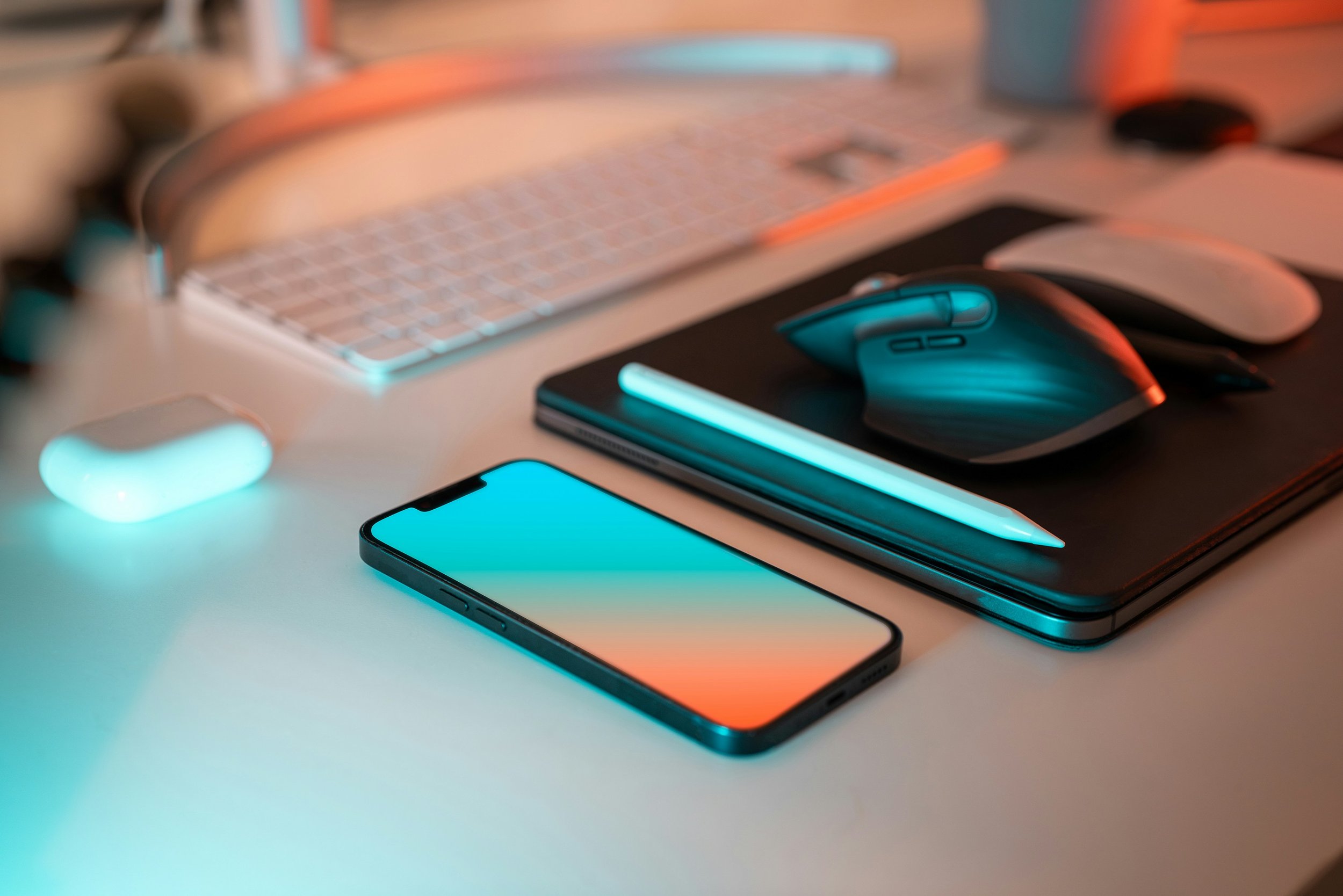As digital landscapes evolve, web design trends in 2025 focus on innovation, user experience, and functionality. AI-driven automation streamlines design, while minimalist and zero UI principles enhance simplicity and speed. Immersive 3D elements, adaptive dark mode, and voice user interfaces redefine engagement. Motion design, sustainable web practices, and experimental aesthetics push creative boundaries. Seamless e-commerce and mobile-first adaptability ensure accessibility and efficiency. Embracing these trends helps businesses and designers stay competitive in an ever-changing online world
In the ever-evolving digital landscape, website design trends continue to shift to accommodate technological advancements, user behaviour, and aesthetic preferences. As we step into 2025, web designers, developers, and businesses must stay ahead of the curve to ensure their online presence remains compelling, functional, and engaging.
This article explores the most significant website design trends of 2025, highlighting the innovations shaping the digital experience.
1. AI-Driven Design and Automation
Artificial intelligence (AI) is transforming web design by offering advanced automation and intelligent design tools. AI-powered platforms like Wix ADI and Framer are revolutionising how websites are built by streamlining the design process, offering personalised layouts, and enhancing user interactions.
Key Features of AI-Driven Design:
- Automated UI/UX recommendations based on user behaviour.
- AI-generated content and layouts tailored to user needs.
- Personalisation engines that adapt dynamically to user preferences.
Businesses leveraging AI for design can create highly personalised and efficient websites, reducing development time and costs while improving user engagement.
2. Minimalist, Zero UI, and Hyper-Simplicity
The trend of minimalist and zero UI continues to dominate in 2025, with websites focusing on essential elements while eliminating unnecessary clutter. This movement is driven by a need for faster load times, better mobile experiences, and improved accessibility.
Minimalist Design Characteristics:
- Whitespace dominance for a clean and distraction-free interface.
- Simple typography and monochrome palettes to improve readability.
- Hidden navigation menus (such as hamburger menus) for a seamless experience.
- Limited but impactful animations to enhance UX without overwhelming the user.
Hyper-simplicity ensures that users can navigate websites effortlessly, focusing on what truly matters—content and functionality.
3. Immersive 3D and Interactive Experiences
As web technologies evolve, 3D design elements and interactive experiences are becoming more mainstream. With WebGL, Three.js, and other advanced tools, websites in 2025 can deliver stunning, immersive visuals that captivate users.
What to Expect in 2025:
- Hyper-realistic 3D graphics integrated seamlessly into web pages.
- Virtual and augmented reality (VR/AR) enhancements for product showcases.
- Micro-interactions and hover effects for a more engaging browsing experience.
- Parallax scrolling with depth perception to create a dynamic feel.
Brands leveraging 3D elements will stand out by providing memorable and engaging online experiences.
4. Dark Mode Evolution
Dark mode has been a popular feature for years, but in 2025, its implementation is more sophisticated. Websites are offering adaptive dark modes, which intelligently adjust based on ambient light conditions and user preferences.
Dark Mode Trends:
- Dynamic dark mode toggles with automatic adaptation.
- Neumorphism-inspired UI elements for a sleek, modern feel.
- Energy-efficient design to reduce eye strain and improve accessibility.
- High-contrast colours to ensure readability and visual appeal.
Dark mode is now a default rather than an option, providing users with a visually comfortable browsing experience.
5. Voice User Interfaces (VUI) and Conversational UI
The rise of voice assistants like Alexa, Siri, and Google Assistant has driven the demand for voice user interfaces (VUI) and conversational UI elements in website design.
How VUI is Changing Websites:
- Voice search optimisation for better accessibility and SEO.
- Voice-activated navigation allowing hands-free browsing.
- AI chatbots with natural language processing (NLP) for improved customer support.
With the rise of smart devices, incorporating VUI ensures that websites remain future-proof and inclusive.
6. Advanced Motion Design and Micro-Animations
Animations are more than just decorative elements in 2025—they play a key role in enhancing UX and storytelling.
Popular Motion Design Trends:
- Smooth transitions and animated page loads for a seamless experience.
- Lottie animations and SVG graphics for lightweight yet engaging visuals.
- Scroll-triggered animations to create interactive storytelling.
Subtle yet meaningful animations contribute to a website’s overall aesthetic and usability.
7. Sustainable and Eco-Friendly Web Design
Sustainability in digital design is a growing concern, with businesses striving to reduce their website’s carbon footprint. In 2025, eco-friendly web design is a priority for many brands.
Key Sustainable Practices:
- Lightweight design to reduce energy consumption.
- Green hosting solutions with renewable energy sources.
- Efficient coding practices to lower data transfer rates.
- Lazy loading and adaptive images to enhance performance.
Sustainability-focused design not only benefits the planet but also improves website speed and user experience.
8. Brutalism and Experimental Aesthetics
While minimalism dominates, brutalist and experimental web design is also gaining traction. These styles break traditional design rules to create striking, unconventional layouts.
Brutalist Design Elements:
- Bold typography and asymmetric grids for an edgy look.
- Raw, unpolished aesthetics that contrast with clean design trends.
- Intentional design flaws like misaligned elements and overlapping text.
This trend appeals to brands that want to challenge conventions and stand out in a crowded digital space.
9. Seamless E-commerce Experiences
With online shopping continuing to grow, seamless e-commerce design is more important than ever. 2025 sees an emphasis on:
E-commerce Innovations:
- One-click checkout and frictionless payments.
- AI-powered product recommendations for personalised shopping.
- Augmented reality (AR) try-on features.
- Live shopping experiences integrated into websites.
A smooth and engaging e-commerce experience drives conversions and customer retention.
10. Mobile-First and Adaptive Design
Mobile-first design remains critical, with more users browsing on smartphones than desktops. In 2025, websites adopt adaptive designs that adjust fluidly across devices.
Key Mobile Trends:
- Thumb-friendly navigation for improved usability.
- Adaptive typography and fluid layouts for better readability.
- Fast-loading pages optimised for 5G networks.
- Gesture-based interactions to enhance user engagement.
Mobile-first strategies ensure websites remain accessible, fast, and user-friendly.
Conclusion
Website design in 2025 is a fusion of AI-powered automation, immersive visuals, sustainability, and user-centric experiences. As businesses and designers embrace these innovations, they will create more engaging, accessible, and future-proof websites.
Staying ahead of these trends is crucial for brands aiming to deliver exceptional digital experiences that resonate with users. By adopting AI, 3D interactions, voice interfaces, and sustainable practices, the future of web design promises to be both visually stunning and functionally advanced.
Whether you are a business owner, developer, or designer, keeping up with these trends will ensure your online presence remains relevant in the fast-evolving digital world of 2025.





























